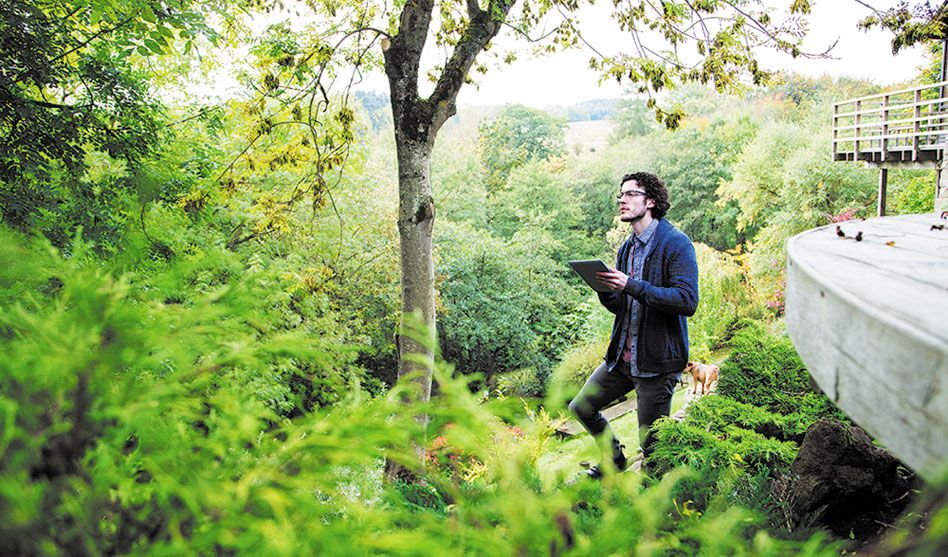Need to hire an arborist? Just be sure — about everything
TARA Mccain | Urban Forestry Coordinator
With spring now upon us, property owners can find themselves in need of tree maintenance. But many are unsure how to accomplish this. Sometimes trees may be dying, or maybe they look a little different from before. Texas Trees Foundation recommends several steps for property owners before selecting an arborist and has released a set of commonly asked questions to help with this process.
First, what is the Texas Trees Foundation? This organization has served as a catalyst in creating a reimagined green legacy for North Texas and this year is celebrating 40 years of addressing urban forestry issues in Dallas.
Scientific research has led to Texas Trees Foundation’s vision of transforming outdoor spaces into greener, cleaner, cooler and healthier communities while also educating the public on the social, economic, environmental and health benefits that trees provide.
What does an arborist do? Also known as “tree surgeons,” arborists are dedicated to the practice of arboriculture — the cultivation, management and study of individual trees, shrubs, vines and other perennial woody plants.
What services does an arborist provide? Arborists focus on proper tree pruning to improve or maintain the health of a tree and improve structure and on removal of dead limbs within the canopy to improve safety. They also determine whether or not a tree needs to be removed and do emergency work and assessments, such as assessing and addressing tree damage after a storm.
Arborists also advise on when/where/how to plant a tree, or what kind of tree to plant. Some arborists work for companies that will acquire trees and plant for you.
Overall plant health care services. After an arborist assesses your trees, they can recommend many kinds of services such as fertilization, soil decompaction, spraying/injecting for insects and diseases, etc.
When should I contact an arborist? Contact an arborist if you see the tips of branches throughout the canopy of your tree dying back; if you see the leaves of your tree changing color when they should not or if they look patchy; if an event happens that damages your tree, whether it be weather or mechanical.
Other times you should contact an arborist are if you are having any kind of construction happening on your property near your tree or trees; if you are concerned about watering your tree too much or too little (watering needs vary throughout the year); if you have any questions about properly mulching your tree; if you see strange insects or caterpillars on your tree (Beetles like to drill holes into the trunk of the tree and cause damage within, and caterpillars like to eat the leaves in the canopy and can defoliate a tree quickly); if you see any kind of fungus growing on your tree; if there is any obvious decay within a tree and/or you are worried about it falling; if you are concerned about limbs hanging over your house, or growing into power lines that cross your property.
How do I hire an arborist? Look for membership in a professional organization such as the International Society of Arboriculture, the Tree Care Industry Association or the American Society of Consulting Arborists. You can begin by visiting ISATexas.com to find a certified arborist near you.
To verify if the arborist has an ISA Certified Arborist credential, check TreesAreGood.org and use its arborist search tool.
From then on, it’s time for due diligence. Ask for proof of insurance (liability and workman’s compensation) and the phone number of the insurance company if you are not satisfied. Ask for references to find out where the company has done work similar to the work you are requesting.
Unless you know and are comfortable with the arborist, get more than one estimate. Be wary of individuals who go door-to-door and offer bargains for performing tree work. Good arborists will only perform accepted practices. For example, practices such as topping a tree or using climbing spikes on live trees are not necessary.
Don’t just accept the low bid. Compare all the above to the bids.
What are the different types of arborists? Board certified master arborists are recognized by their peers and the public as having reached the highest level of certification offered by ISA. Hiring a BCMA provides tree owners and government decision makers the opportunity to become better informed about proper tree care and their selection of services based on the expertise represented by the credential.
Municipal arborists manage publicly-owned trees in cities and towns and are usually employed by cities, counties, or another public agency.
Commercial arborists either own or work for businesses that provide tree care on a fee basis. They can be hired to do work for individuals or public agencies.
Utility arborists manage trees along utility rights-of-way. They can be employed by the utility or contracted to do tree clearance.
Arboricultural consultants are technical experts who diagnose tree problems, do tree appraisals, and provide management programs for individuals, businesses, or public agencies.
For more information, visit TexasTrees.org.
















